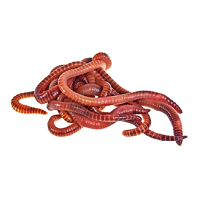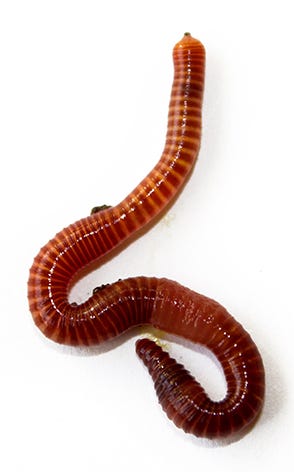Red wigglers: Where to buy
Whatever You Required to Find Out About Red Wigglers for Composting
Red wigglers, or Eisenia fetida, play a pivotal role in the world of composting, changing organic waste right into valuable dirt changes. The process of setting up a worm container and preserving it can pose challenges.
What Are Red Wigglers?

(Charlotte Worm Farms)
Belonging To The United States and copyright, red wigglers are surface-dwelling microorganisms that favor wet, cozy environments rich in disintegrating organic issue. Their diet regimen is composed largely of decomposing plant product, food scraps, and other natural particles, which they take in and break down efficiently. As they absorb this product, they create nutrient-rich spreadings that enhance soil fertility.
Red wigglers are hermaphroditic, possessing both male and women reproductive organs, and can replicate promptly under ideal problems. This capability makes them a perfect selection for composting systems, as their population can raise quickly. Their durability and adaptability to numerous environments better solidify their relevance in sustainable waste administration techniques. In general, red wigglers are essential contributors to the procedure of recycling natural waste right into valuable compost.
Advantages of Using Red Wigglers
Using red wigglers in composting systems supplies various benefits that boost both the performance of waste monitoring and the top quality of the resulting compost. These worms, clinically referred to as Eisenia fetida, are particularly efficient at damaging down raw material, transforming kitchen scraps and lawn waste right into nutrient-rich garden compost at an increased price.
One of the main advantages of making use of red wigglers is their capacity to consume large quantities of natural product, usually refining their weight in food waste daily. This high consumption rate results in quicker disintegration and decreases the volume of waste sent to garbage dumps. In addition, the spreadings generated by red wigglers are abundant in essential nutrients, helpful microbes, and enzymes, making them an excellent plant food for yards and plants.
Furthermore, red wigglers flourish in a range of environments, making them versatile for both interior and exterior composting systems - red wigglers. Their existence in a compost bin helps to aerate the product, stopping odors and promoting a healthy and balanced composting procedure. Generally, utilizing red wigglers not only adds to efficient waste administration but also sustains sustainable gardening practices with the manufacturing of top notch compost
(eisenia fetida for sale)
Establishing Your Worm Container
To successfully establish up a worm bin, it is essential to choose a proper container that fulfills the demands of red wigglers while providing a favorable atmosphere for composting. A suitable container can be made from plastic, timber, or steel, with a capacity of a minimum of 1 square foot for each pound of worms.
Make sure the container has ample drain openings to stop excess moisture, as red wigglers flourish in a moist, however not waterlogged, atmosphere. red wigglers. The bin should likewise be aerated to supply enough air movement, protecting against anaerobic problems that can damage the worms
An ideal location for the worm bin is an awesome, dark area, without direct sunlight and severe temperature levels, as red wigglers choose a temperature variety of 55 to 77 degrees Fahrenheit.
Prior to presenting the worms, prepare bed linen materials such as shredded newspaper, cardboard, or coconut coir, which will certainly provide both habitat and food. Dampen the bed linen lightly to create an inviting setting for the worms. Consider positioning a cover on the bin to keep moisture and decrease pests, while guaranteeing it can be conveniently eliminated for maintenance.
Feeding and Treatment Standards
Feeding red wigglers is an important aspect of keeping a healthy composting system. These worms flourish on a diverse diet regimen, mostly composed of natural materials such as fruit and veggie scraps, coffee grounds, and smashed eggshells. It is necessary to stay clear of feeding them meat, dairy products, and oily foods, as these can create undesirable smells and bring in pests.
When introducing food to your worm bin, cut or shred materials into smaller pieces to promote quicker decay. Begin with little quantities to assess the worms' usage rate, gradually boosting the amount as they adapt. It is a good idea to alternative feeding places within the container to motivate comprehensive blending and oygenation of the compost.

Troubleshooting Common Issues
Keeping a thriving worm composting system see page can in some cases present challenges that require focus and troubleshooting. Usual concerns include an unpleasant odor, which often indicates overfeeding or the existence of anaerobic conditions. To remedy this, reduce the amount of food included and guarantee proper oygenation by blending the bed linen product.
One more frequent problem is the retreat of worms from the bin. This can occur as a result of too much wetness or inappropriate ecological conditions. Frequently check the dampness levels, going for a wet however not soggy uniformity, and keep ideal temperatures in between 60-80 ° F(15-27 ° C )to produce a comfy environment for your red wigglers.
Pests, such as fruit flies, can additionally get into worm containers. red wigglers. To fight this, cover food scraps with a layer of bedding or shredded paper to prevent flies from laying eggs. Additionally, make certain that any type of food included is fresh and devoid of mold, which can draw in unwanted bugs
Finally, if your worms appear inactive, examine for anxiety factors such as temperature level variations or insufficient dampness. Dealing with these common issues will aid maintain a healthy and balanced and productive worm composting system.
Final Thought
In recap, red wigglers, or Eisenia fetida, play an important function in lasting waste administration with vermicomposting. Their capacity to efficiently convert natural waste into nutrient-dense castings improves dirt health and promotes plant development. Appropriate arrangement and maintenance of a worm bin, together with adherence to feeding standards, ensure a flourishing ecological community that minimizes garbage dump payments. Resolving usual issues quickly additionally sustains the effectiveness of this ecological method, adding to ecological sustainability and farming performance.